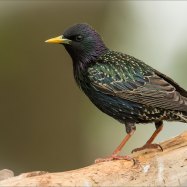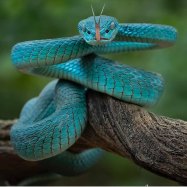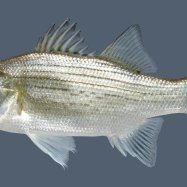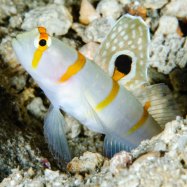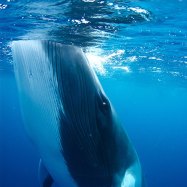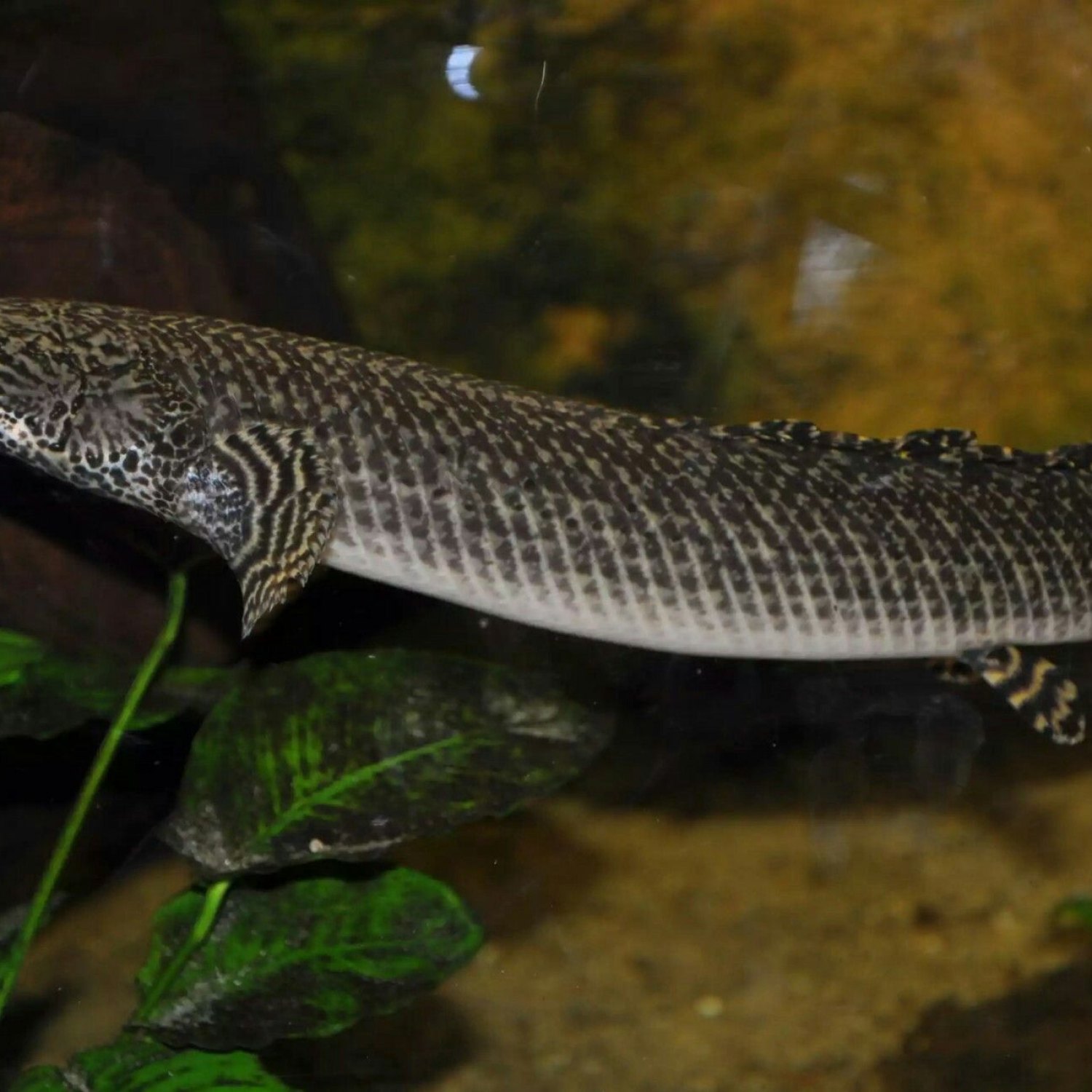
Bichir
Up to 20 inches (50 cm)
Meet the fascinating Bichir – a unique fish with an elongated and cylindrical body, found in rivers and swamps. Belonging to the Polypteridae family, they can reach up to 20 inches in length. With their distinctive dorsal and ventral fins, they are a sight to behold in their natural habitat. #Bichir #Polypteridae #Rivers #Swamps #Fish
Animal Details Summary:
Common Name: Bichir
Kingdom: Animalia
Habitat: Freshwater
The Fascinating World of Bichirs: A Unique Freshwater Predator
From the depths of the West and Central African rivers and swamps comes an ancient and enigmatic creature: the bichir. With its elongated body and menacing appearance, this fish has intrigued and captured the attention of fish enthusiasts for centuries. But what exactly is a bichir? In this article, we will delve into the world of this prehistoric-looking creature and discover its remarkable features, behavior, and importance in the animal kingdom.The Basics
Let's start with the basics – what is a bichir? The scientific name for this fish is Polypterus senegalus and it belongs to the Kingdom Animalia, Phylum Chordata, and Class Actinopterygii Bichir. It is part of the family Polypteridae and order Polypteriformes. The bichir is known by many names, including dragonfish, dinosaur eel, and sometimes even brichardii, but its most common name is simply "bichir."Appearance and Physical Characteristics
One of the most striking features of bichirs is their appearance. They have an elongated and cylindrical body with distinct dorsal and ventral fins that extend along their entire body length. This gives them a unique and almost prehistoric appearance, often likened to that of a dragon or eel. Bichirs can grow up to 20 inches (50 cm) in length, making them a medium-sized fish in the animal kingdom.The coloration of bichirs varies, but they are usually olive-brown or gray with dark patches. This allows them to blend in with their environment and hide from potential predators. However, in captivity, they can display vibrant colors like red, orange, and yellow Bald Eagle.
Habitat and Distribution
Bichirs are native to the freshwater habitats of West and Central Africa, specifically in countries like Senegal, Nigeria, Cameroon, and the Democratic Republic of Congo. They can be found in slow-moving rivers and swamps, with a preference for shallow waters with plenty of vegetation. Their habitat is crucial to their survival, as it provides food, shelter, and breeding grounds.Due to their popularity in the aquarium trade, bichirs are now found in many other parts of the world, including North and South America, and Asia. However, these introduced populations pose a threat to native species and can have a negative impact on the ecosystem.
Feeding and Diet
Bichirs are primarily carnivorous, meaning they feed on other animals. In the wild, they are opportunistic predators, meaning they will feed on whatever prey is available in their habitat. Their diet consists of a variety of small fish, crustaceans, insects, and even small mammals and birds.In captivity, bichirs can be fed a diet of live or frozen food, such as bloodworms, brine shrimp, and small fish. However, they are known to be picky eaters and may ignore certain types of food, making their diet a crucial aspect of their care.
Reproduction and Lifespan
Bichirs are intriguing creatures when it comes to reproduction. Unlike most fish that lay eggs, bichirs are one of the few species that give birth to live young. The female bichir carries her fertilized eggs inside her body until they hatch into small, fully formed bichirs. These young fish are independent and have a better chance of survival than other fish that hatch as larvae.Bichirs also have an incredible ability to survive in harsh and unpredictable environments. They have a unique breathing organ called a "modulated anus" that allows them to breathe air directly, making them resilient and able to live in water with low oxygen levels. This also allows them to survive out of water for extended periods, making them one of the few fish that can survive being shipped and kept in small aquariums for a short time.
In the wild, bichirs can live up to 20 years, while captive bichirs have a shorter lifespan of around 10-15 years.
The Importance of Bichirs in the Animal Kingdom
While bichirs may not be the most well-known or popular creatures in the animal kingdom, they play a crucial role in their ecosystem. As predators, they help maintain a balance in their habitat by controlling the population of their prey species. They also serve as prey for larger animals, creating a complex and interconnected food web.Bichirs are also an important species for research and study, as they have several unique features and behaviors that can shed light on evolutionary processes. For example, their ability to breathe air and adapt to different environments can provide insight into how fish evolved into amphibians millions of years ago.
Furthermore, bichirs have cultural significance in many West and Central African countries. In some cultures, they are seen as symbols of strength and resilience, and their images can be found in art, jewelry, and even clothing.
Conservation and Threats
As with many species, bichirs face several threats to their survival. Habitat destruction, caused by human activities such as deforestation and dam construction, is one of the most significant threats to their population. This can disrupt their breeding cycles and reduce the availability of food and shelter.The introduction of bichirs into new habitats also poses a threat to native species, as they can outcompete and prey on other fish, disrupting the balance of the ecosystem.
Fortunately, bichirs have a high reproductive rate and can adapt to changing environments, making them more resilient to these threats. However, their numbers have decreased in recent years, and it is essential to take measures to protect and conserve their habitats to ensure their survival.
In Conclusion
The bichir is a fascinating and unique creature, with a long evolutionary history and a vital role in its ecosystem. Its distinctive appearance, behavior, and abilities have captured the curiosity of many people, making it a popular species in the aquarium trade. However, it is crucial to remember that bichirs are not just beautiful pets; they are living beings that are important to their environment and deserving of our respect and protection.Despite the challenges they face, bichirs continue to thrive in their natural habitats, showcasing the resilience and adaptability of nature's creations. Let us strive to protect and preserve these ancient and majestic creatures, so they can continue to thrive for generations to come.

Bichir
Animal Details Bichir - Scientific Name: Polypterus senegalus
- Category: Animals B
- Scientific Name: Polypterus senegalus
- Common Name: Bichir
- Kingdom: Animalia
- Phylum: Chordata
- Class: Actinopterygii
- Order: Polypteriformes
- Family: Polypteridae
- Habitat: Freshwater
- Feeding Method: Carnivorous
- Geographical Distribution: West and Central Africa
- Country of Origin: Senegal
- Location: Rivers and swamps
- Animal Coloration: Varies; usually olive-brown or gray with dark patches
- Body Shape: Elongated and cylindrical with dorsal and ventral fins extending along the body
- Length: Up to 20 inches (50 cm)
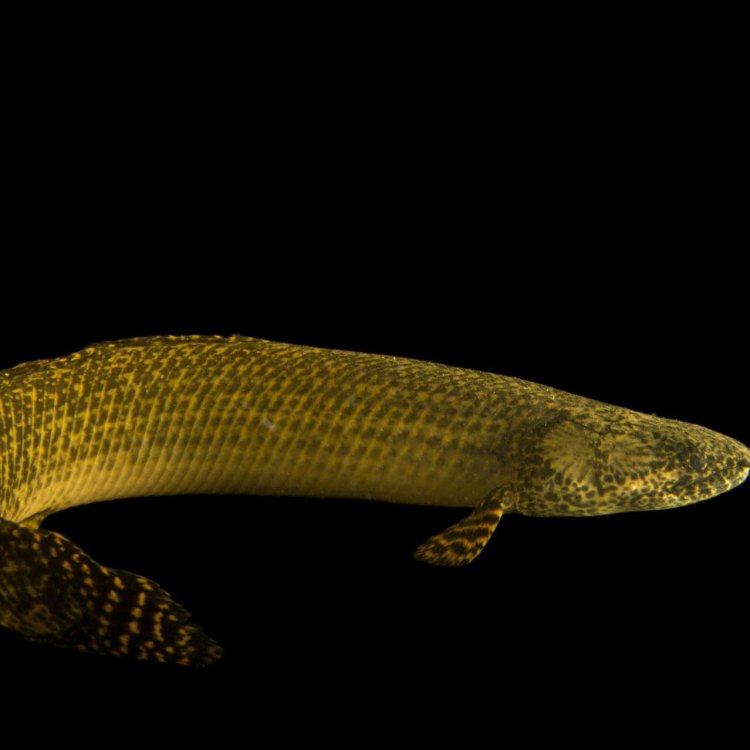
Bichir
- Adult Size: 12-16 inches (30-40 cm)
- Average Lifespan: 10-15 years
- Reproduction: Oviparous (lays eggs)
- Reproductive Behavior: The male builds a nest and guards the eggs
- Sound or Call: No
- Migration Pattern: No
- Social Groups: Solitary
- Behavior: Nocturnal
- Threats: Habitat destruction, overfishing, and pollution
- Conservation Status: Least Concern
- Impact on Ecosystem: Bichirs play a role in controlling fish populations in their habitat
- Human Use: Popular as aquarium fish
- Distinctive Features: Lobed pectoral fins, lungs for breathing air, and armored scales
- Interesting Facts: Bichirs are known for their ability to survive in low oxygen environments and can breathe air using their lungs
- Predator: Predators include larger fish and birds
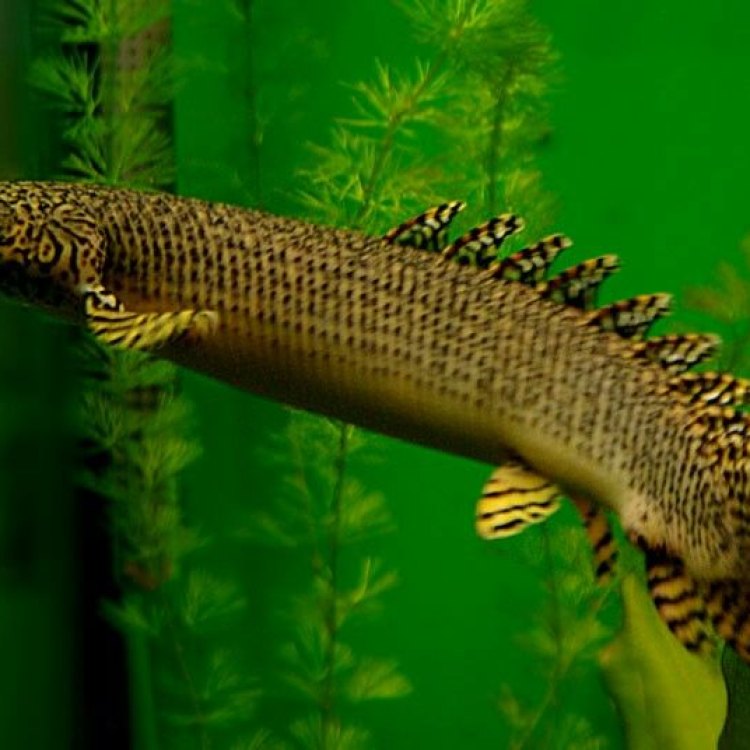
Polypterus senegalus
The Fascinating World of the Bichir: Unique Features and Importance in Ecosystems
The diverse and mysterious underwater world never ceases to amaze us. From colorful tropical fish to enormous whales, there is an abundance of life beneath the surface of our oceans and rivers. One of the most intriguing inhabitants of these water bodies is the Bichir, a primitive fish with unique features and incredible survival skills.Bichirs, also known as "dinosaur eels" or "dragonfish," are native to the freshwater rivers and lakes of Central Africa PeaceOfAnimals.Com. They belong to the Polypteridae family, which dates back to over 300 million years, making them one of the oldest fish species on Earth. Bichirs have managed to survive through the ages, adapting to changing environments and coexisting with other species. In this article, we will explore the distinctive features of the Bichir and its crucial role in maintaining the balance of aquatic ecosystems.
The Adult Bichir: A Formidable Sight
Bichirs can grow up to 12-16 inches (30-40 cm) in length, making them a sizable addition to any aquarium. Their elongated and slender body is covered in thick, armor-like scales, giving them a prehistoric appearance. These scales are made of a bony substance, making them less vulnerable to predators and providing protection against sharp objects in their environment.Unlike most fish species, Bichirs have a pair of lobed pectoral fins, resembling small legs, that they use to crawl and even "walk" along the bottom of their habitat. This unique feature allows them to navigate through the dense vegetation and rocky areas of their habitat, making them efficient hunters and territorial defenders.
The Secrets of Bichir Survival: Lungs and Low Oxygen Adaptation
One of the most fascinating abilities of the Bichir is its ability to breathe air using its primitive lungs Brazilian Terrier. Bichirs have a supplement respiratory system, which they can use when the oxygen levels in their environment are low. With their special adaptation, Bichirs can survive in stagnant, low-oxygen waters for extended periods, making them resilient in unpredictable conditions.This remarkable survival mechanism has also allowed Bichirs to colonize new habitats. As they can breathe atmospheric air, they can move between different water bodies, accessing new food sources and reproducing in new areas. This ability to adapt to varying environments has made Bichirs successful and dominant in their natural habitat.
The Bichir Reproduction: A Dedicated Father
One of the most unique reproductive behaviors of the Bichir is that they are oviparous, meaning they lay eggs. During breeding season, male Bichirs will build a nest and entice a female to lay her eggs inside. The male then takes on the task of guarding the eggs until they hatch, making him a dedicated father.This behavior is also seen in other fish species, such as seahorses and sticklebacks, but what makes the Bichir stand out is that the male uses its pectoral fins to fan the eggs, ensuring proper oxygenation and preventing fungus growth. This level of paternal care is rare in the animal kingdom, making Bichirs a truly remarkable species.
A Quiet Existence: No Sound or Migration
In a world filled with chirping birds and roaring lions, the Bichir is content with a quiet existence. They do not make sounds or calls, unlike some other fish species, and prefer to live in solitary social groups. This behavior is also reflected in their nocturnal lifestyle, where they are most active at night, hunting for food and protecting their territory while taking refuge during the day.Bichirs are also not known for their migratory patterns. They tend to stay in the same habitat throughout their lifespan, unless forced to move due to changes in their environment. Their adaptation to low-oxygen environments may be one of the reasons why they do not need to migrate in search of more favorable conditions.
Threats to Bichir Populations: Human Impact
In recent years, Bichirs have faced numerous threats to their survival. Habitat destruction due to deforestation, land development, and dam construction has significantly reduced their natural habitat. Overfishing is also a growing concern, as Bichirs are popular as aquarium fish and are sometimes caught for consumption.Pollution is another major threat to Bichirs. As they have a specialized respiratory system, they are sensitive to changes in water quality and can be severely affected by pollutants such as pesticides, heavy metals, and sewage. These threats have led to a decline in Bichir populations, and they are now listed as "Least Concern" on the IUCN Red List, highlighting the need for conservation efforts.
The Crucial Role of Bichirs in Ecosystems
Bichirs may be small in size, but they play an essential role in their ecosystems. As predators, they feed on smaller fish, controlling their populations and preventing overpopulation. In turn, Bichirs are also preyed upon by larger fish and birds, contributing to the food chain and maintaining a balance in aquatic ecosystems.Their ability to survive in low-oxygen environments also plays a crucial role in the health of their habitat. As they can endure in stagnant waters, they help in the decomposition process of organic matter, preventing the buildup of harmful bacteria and maintaining water quality.
Human Use: Bichirs in the Aquarium Industry
While in the wild, Bichirs are facing threats to their existence, their unique features have made them popular among aquarium hobbyists. Many fish enthusiasts are intrigued by their prehistoric appearance and their ability to survive in extreme conditions. Bichirs are relatively low-maintenance fish, making them suitable for beginners and experienced aquarists alike.However, it is essential to note that owning a Bichir comes with a responsibility to preserve their natural habitats and ensure their survival in the wild. As with any species, a balance must be maintained between human use and conservation efforts to avoid endangering their existence.
In Conclusion
The Bichir may not be the most well-known fish species, but its unique features and incredible survival skills make it a truly fascinating creature. From its primitive respiratory system and paternal instincts to its armored scales and pectoral fins, the Bichir has adapted and thrived for millions of years.As we continue to explore and understand the diverse underwater world, it is vital to recognize the importance of every species and their role in maintaining a healthy ecosystem. As for the Bichir, it is a reminder that even the most primitive creatures can have a significant impact on their environment and should be appreciated and protected for generations to come.
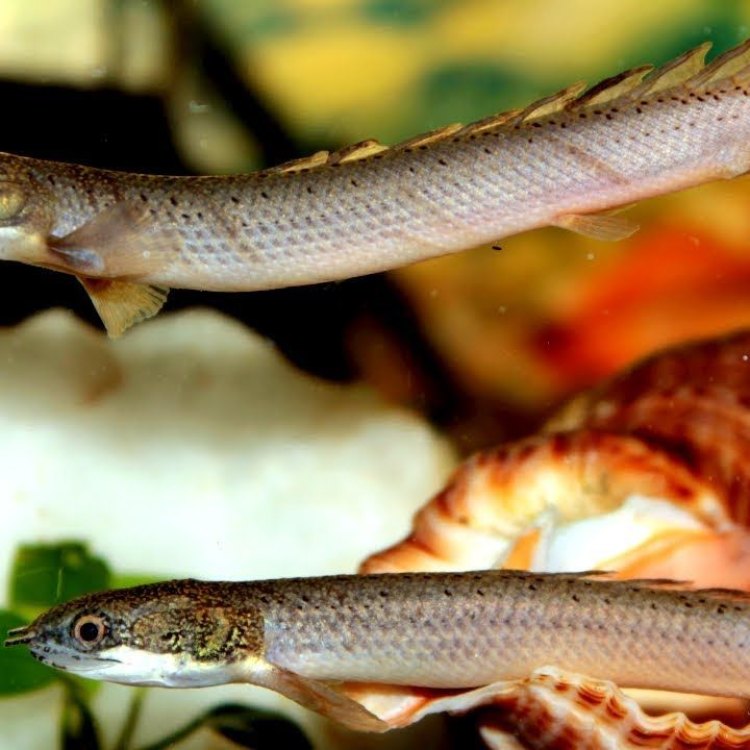
The Fascinating World of Bichirs: A Unique Freshwater Predator
Disclaimer: The content provided is for informational purposes only. We cannot guarantee the accuracy of the information on this page 100%. All information provided here may change without prior notice.



